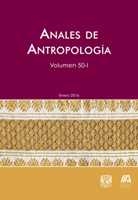Enviromental factors in the impact of the matlazahuatl epidemic (1762-1763) in the indian villages under the jurisdiction of the Villa de Cordoba
Main Article Content
Abstract
During the Colonial Period many epidemics ravaged the population of the Nueva España. We examined in this work the outbreak of matlazahuatl which occurred in 1762-1763. In documents from the Archivo General de la Nación we found that the natives of the towns under the jurisdiction of the villa de Cordoba requested to be released from taxes claiming the prejudices have caused by the epidemic.
This was a widespread outbreak in the region. Nevertheless, it did not affect three villages: San Jerónimo Zentla, San Juan de la Punta and Santiago Huatusco. This paper inquires about the possible causes of the differential scourge of the epidemic, by studying some factors of the physical and social environment identified in the regional context.
Downloads
Download data is not yet available.
Article Details
How to Cite
Serrano Sánchez, C., Bravo Almazán, V., Cordero Villaloz, S., & Díaz Flores, L. A. (2016). Enviromental factors in the impact of the matlazahuatl epidemic (1762-1763) in the indian villages under the jurisdiction of the Villa de Cordoba. Annals of Anthropology, 50(1), 96–111. https://doi.org/10.1016/j.antro.2015.10.003
Esta revista usa una licencia CC del tipo CC BY-NC-ND 3.0. Se maneja bajo el esquema de acceso abierto, con una licencia Creative Commons Attribution-NonCommercial-NoDerivs 3.0 Unported.
